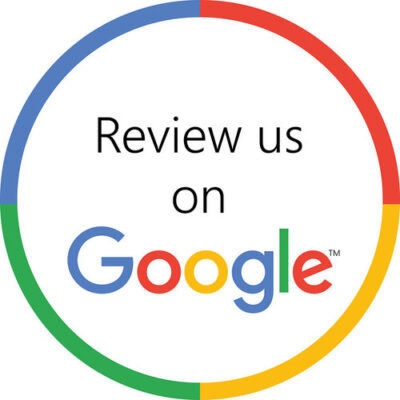1/18/2025 All Texas Media might recommend the following platforms as viable options for businesses to attract customers, depending on the target audience and business goals:
1. Facebook
Why: It remains the most powerful platform for targeting local communities through groups, pages, and ads.
Best for: Local businesses, service providers, and businesses targeting older demographics.
Features: Marketplace, events, and detailed ad targeting.
2. Instagram
Why: Highly visual, with opportunities for organic reach and paid ads.
Best for: Lifestyle brands, e-commerce, hospitality, fashion, and businesses with visually appealing products or services.
Features: Stories, Reels, and shopping integrations make it ideal for product showcasing and engagement.
3. LinkedIn
Why: Professional networking and thought leadership opportunities.
Best for: B2B businesses, professional services, and personal branding for entrepreneurs.
Features: Articles, targeted ads, and groups for niche audiences.
4. YouTube
Why: Long-form video content is excellent for storytelling and demonstrations.
Best for: Tutorials, product demonstrations, and industries like education, fitness, and tech.
Features: Monetization options and integration with Google Search.
5. Pinterest
Why: High intent to purchase among users searching for inspiration and ideas.
Best for: E-commerce, DIY, fashion, home decor, and food businesses.
Features: Shoppable pins and keyword-focused search.
6. Snapchat
Why: Engages younger audiences with ephemeral content.
Best for: Brands targeting Gen Z and millennials.
Features: Geotargeted ads and AR filters.
7. Reddit
Why: Offers access to niche communities with genuine engagement.
Best for: Tech, gaming, and niche markets.
Features: Sponsored posts within specific subreddits.
8. Threads (by Meta)
Why: Positioned as a text-focused social media platform for conversational engagement.
Best for: Brands looking for Twitter alternatives for real-time updates and customer interaction.
9. Nextdoor
Why: Focuses on hyper-local communities.
Best for: Local businesses, especially service-based industries like home services, fitness studios, and restaurants.
Features: Community posts and local deals.
10. WhatsApp and Messenger
Why: Direct and personal communication with customers.
Best for: Customer service, direct sales, and appointment-based businesses.
Features: Business accounts, catalogs, and automated responses.
Both Bluesky and Mastodon are promising alternatives to legacy platforms like Twitter, particularly for businesses and individuals looking for decentralized or community-driven spaces to engage. Here’s an overview of their potential as customer acquisition platforms:
Bluesky
Overview:
Bluesky is a decentralized social media platform developed with the aim of offering users more control over their data and experience. It operates on the AT Protocol and is still in its growth and invitation-only phase.
Strengths:
Engagement: Focuses on meaningful conversations, much like Twitter’s earlier days, but with less noise and more targeted interactions.
Decentralization Appeal: Businesses can align with audiences that value privacy and control over data.
Early Adopter Advantage: Establishing a presence early can help brands stand out as thought leaders on the platform.
Best For:
Tech-savvy audiences.
Brands with a focus on innovation or aligned with the ethos of decentralization (e.g., blockchain, open-source tech).
Businesses seeking to connect with younger, privacy-conscious audiences.
Challenges:
Small user base (currently).
Limited advertising infrastructure as it’s still evolving.
Mastodon
Overview:
Mastodon is a decentralized, open-source platform resembling Twitter but organized into independently run servers (or instances). Each server has its own rules, but all servers can interact.
Strengths:
Community-Centric: Businesses can join or create servers that directly align with their niche.
Customization: Server-based interactions let brands target specific communities more organically.
Decentralization: Appeals to users tired of centralized platforms and traditional advertising models.
Best For:
Brands in niche industries looking to engage with focused, passionate communities.
Organizations that prioritize ethics, transparency, and user control.
Thought leaders and educators.
Challenges:
Requires authentic engagement—traditional ad strategies might not work well.
Steeper learning curve for businesses and users unfamiliar with decentralized networks.
Comparison of Bluesky and Mastodon for Customer Acquisition:
Feature Bluesky Mastodon
Audience Early adopters, tech-savvy. Niche communities, diverse.
Advertising No formal ads (yet). No formal ads, organic only.
Community Focus Open, less fragmented. Decentralized, server-specific.
Best Use Case Thought leadership, innovation. Community building, niche focus.
Key Takeaway:
Both platforms are early-stage opportunities and more suited for organic engagement than direct sales or large-scale customer acquisition.
If your business or brand thrives on authentic connections, thought leadership, or aligns with decentralization values, Bluesky and Mastodon can be excellent platforms to explore.
For broader customer acquisition goals, pairing these platforms with larger ones like Instagram or LinkedIn could be a balanced strategy.
To comment, please fill out the contact form at the bottom.


